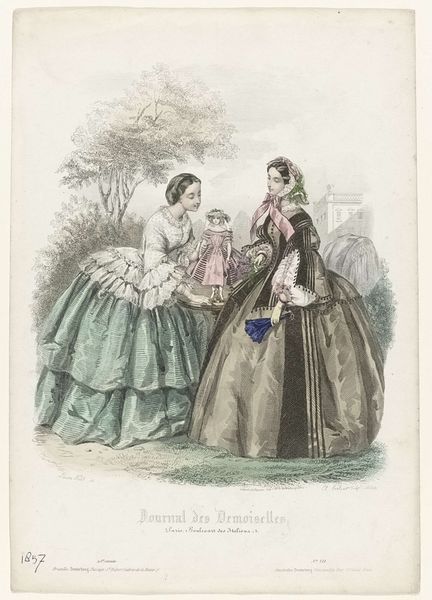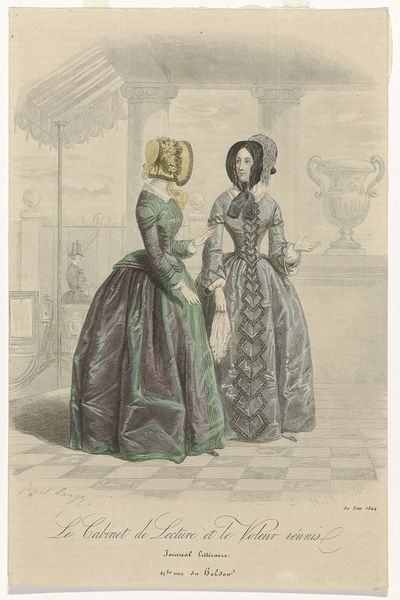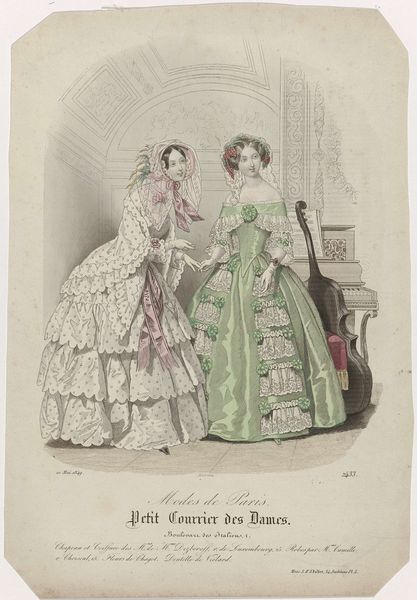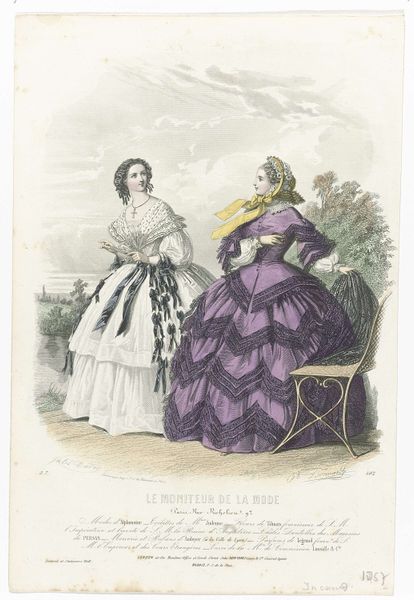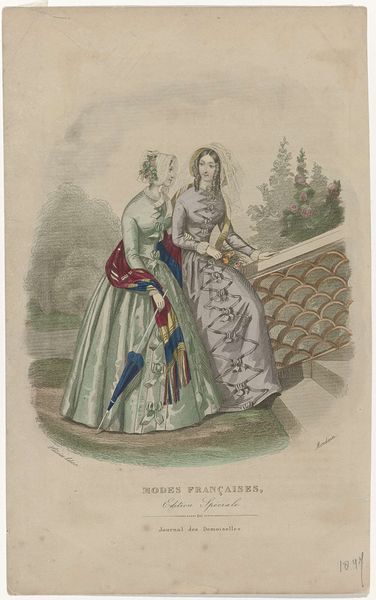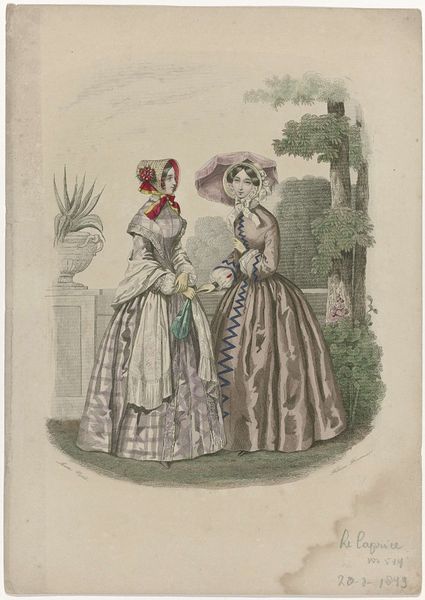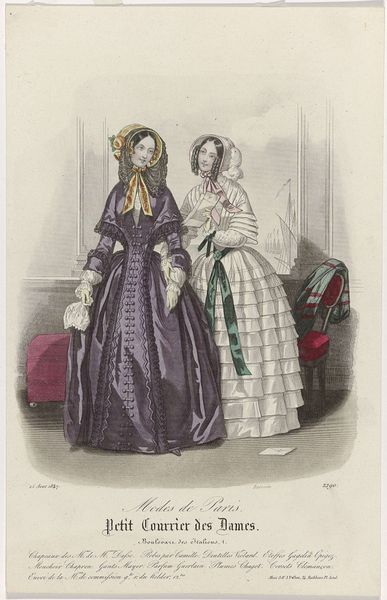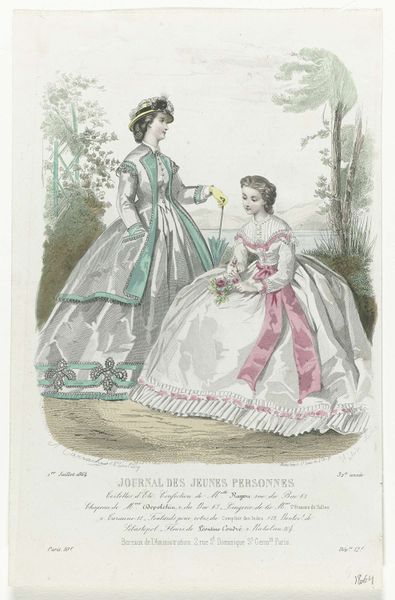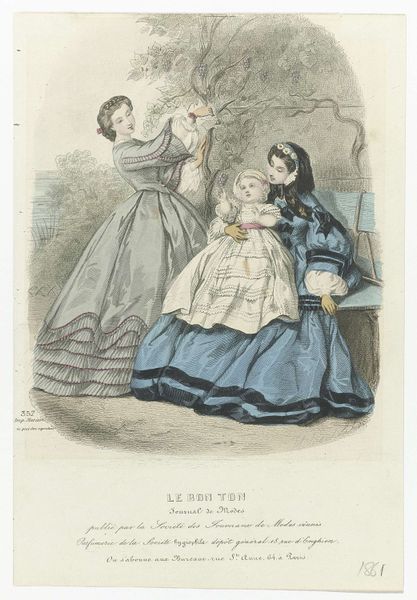
lithograph
#
lithograph
#
intimism
#
watercolour illustration
#
genre-painting
Dimensions: height 263 mm, width 181 mm
Copyright: Rijks Museum: Open Domain
Editor: This lithograph is titled "Journal des Demoiselles, ca. 1860: Paris. Boulevard (...)" attributed to A. Portier, seemingly depicting a Parisian fashion scene. It's a very delicate image. The dresses look incredibly intricate; it makes me wonder about the creation of fashion at that time, like, what's really behind the construction of this aesthetic? Curator: A crucial observation. Forget about individual genius for a moment. Instead, think about the conditions of possibility. How did the materials shape the aesthetic and dictate who got to participate? The dresses in the lithograph, reproduced as idealized images, reflect both aspiration and the labor practices embedded in textile production at the time. What kinds of industrial and agricultural inputs underpinned those dresses? Editor: So you're saying that this seemingly harmless image is intertwined with possibly complex labor relationships of the time? Is it celebrating or obscuring the worker, the supply chains, that make it all possible? Curator: Precisely! Consider the rise of lithography itself, its dependence on newly industrialized paper production. It democratized image-making in some respects, while still depending on material and production structures that privileged the elite. Think of the paper quality, the inks... all this signifies a system of creating beauty based on resource extraction. What appears weightless here on the surface is only possible due to a large hidden substructure. Editor: That is not something I ever would have noticed, but it opens up so many questions. I have a much clearer understanding of the impact this artwork had in the 1860s! Thank you! Curator: My pleasure. It reminds us that no artwork is simply a product of inspiration. Art is embedded and made visible through tangible means.
Comments
No comments
Be the first to comment and join the conversation on the ultimate creative platform.
